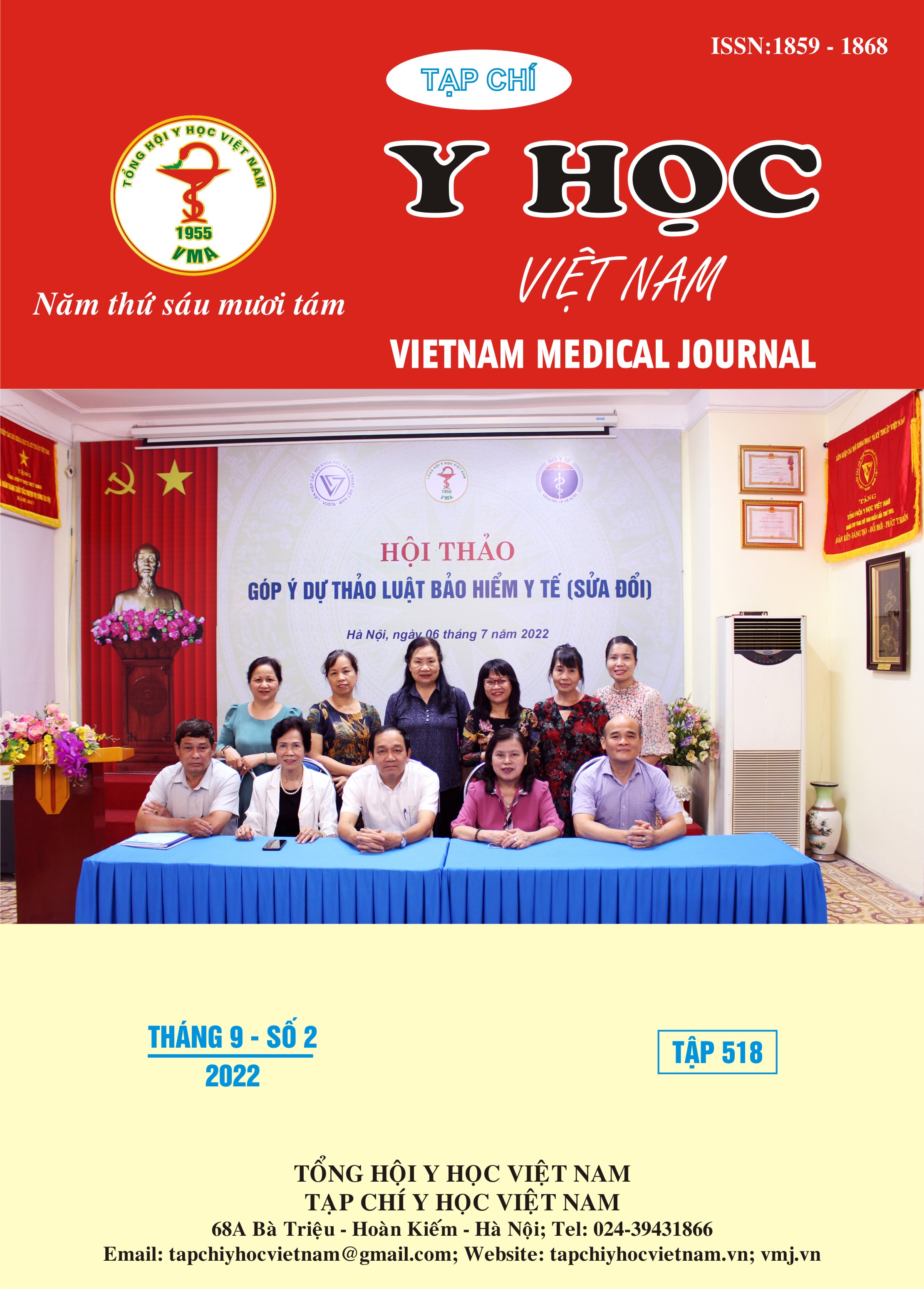TREATMENT RESULT OF GEMCITABIN-CISPLATIN AS INDUCTION CHEMOTHERAPY IN NASOPHARYNX CANCER STAGE III-IV(M0) IN NGHE AN ONCOLOGY HOSPITAL
Main Article Content
Abstract
Objective: Treatment results and adverse effects of gemcitabine-cisplatin induction chemotherapy on patients with stage III-IV (M0) nasopharynx cancer at Nghe An Oncology Hospital. Subjects and methods: clinical trial, retrospective, study on 39 patients with stage III-IV (M0) nasopharynx cancer who received 3 cycle induction chemotherapy gemcitabine-cisplatin at the hospital. Nghe An Oncology Hospital from January 2020 to May 2022. Patients were assessed for response according to Recist 1.1 criteria, toxicity based on Common Terminology Criteria for Adverse Events v.5.0 (CTCAE) classification. Results: Overall response rate was 94.9%, Total response rate in tumor and node are 91.3% and 84.6%. leukopenia (59%), anemia (30.8%) and thrombocytopenia (12.9%). Most toxicity grade 1,2. 1/39 patients with grade 1 elevation of creatinine, 25.6% of patients with grade 1 elevation of liver enzymes after chemotherapy, common side effects include nausea (94.8%), vomiting (64.1%), mainly grade 1. Conclusion: gemcitabine-cisplatin regimen induction chemotherapy in patients with stage III-IV (M0) nasopharynx cancer has a high response rate, well tolerated, mild toxicity, mainly on the hematopoietic system.
Article Details
Keywords
nasopharynx cancer, induction chemotherapy, stage III-IV(M0)
References
2. Zhu J, Duan B, Shi H, et al. Comparison of GP and TPF induction chemotherapy for locally advanced nasopharyngeal carcinoma. Oral Oncology. 2019; 97:37-43. doi:10.1016/ j.oraloncology.2019.08.001
3. Zhang Y, Chen L, Hu GQ, et al. Gemcitabine and Cisplatin Induction Chemotherapy in Nasopharyngeal Carcinoma. New England Journal of Medicine. 2019;381(12):1124-1135. doi: 10.1056/ NEJMoa1905287
4. Ngô Thanh Tùng. Đánh Giá Kết Quả Điều Trị Hóa Xạ Đồng Thời Theo Sau Hóa Chất Cảm Ứng Trên Nhóm Bệnh Nhân Ung Thư Vòm Họng Giai Đoạn III-IVA.; 2021.
5. Sun Y, Li WF, Chen NY, et al. Induction chemotherapy plus concurrent chemoradiotherapy versus concurrent chemoradiotherapy alone in locoregionally advanced nasopharyngeal carcinoma: a phase 3, multicentre, randomised controlled trial. The Lancet Oncology. 2016;17(11): 1509-1520. doi:10.1016/S1470-2045 (16)30410-7
6. Phạm Tiến Chung. Đánh Giá Kết Quả Của Phác Đồ Hóa Xạ Trị Đồng Thời Với Hóa Chất Bổ Trợ Trước Cho Bệnh Nhân Ung Thư Vòm Họng Giai Đoạn III, IV (N2,3) Tại BV K Từ Tháng 11/2011 Đến Tháng 12/2013.; 2018.
7. Lê Thị Sương. Đánh Giá Đáp Ứng và Độc Tính Của Phác Đồ TC Trong Điều Trị Taan Bổ Trợ Ung Thư Vòm Họng Giai Đoạn III-IVB.; 2019.


